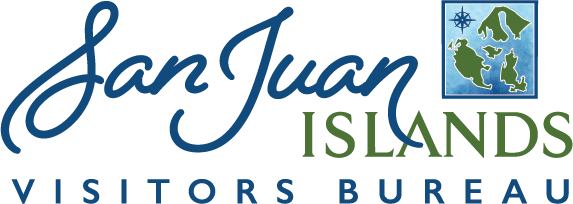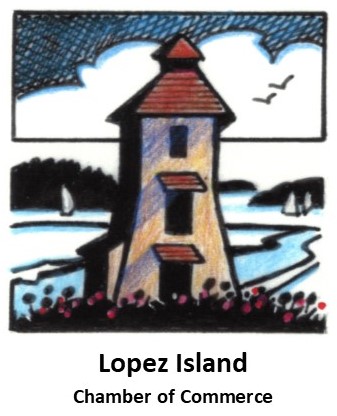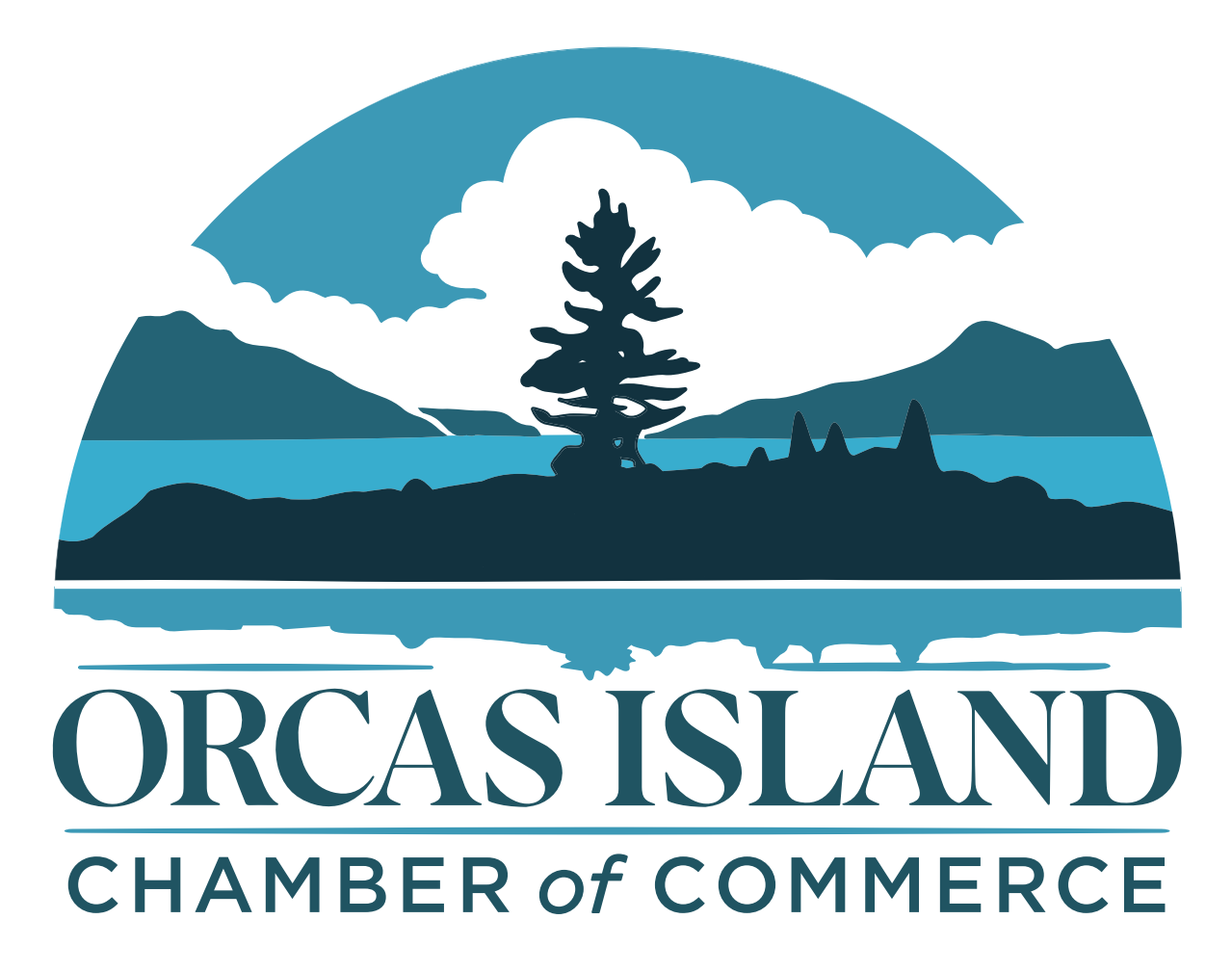Where To Find Wildlife In The Winter
Winter's for the birds! Some species only call the San Juans home in the colder months. See where you can find them...
WRITTEN BY:
AMY NESLER
To most of us, winter is synonymous with hibernation and dormancy. But here in the San Juans, intrepid nature lovers have the opportunity to spot an array of birds that only visit between fall and spring months. Orcas, Lopez, and San Juan Islands are part of the Puget Loop of the Washington State Birding Trail. Aspiring naturalists will be able to check off several terrestrial birds as well as marine species. So lace up those hiking boots, grab a hat and gloves, and make sure the binoculars are handy!
While the species below are commonly seen in the San Juans, this is by no means a comprehensive list. We’ve chosen some of the more eye-catching and popular birds to get you started. For more information, check out the San Juan Islands Audubon Society.

Commonly seen on ponds, lakes, and marshes throughout the San Juan Islands, especially Egg Lake on San Juan Island, which has public access. Many other ponds are on private property but are visible from the roadside. Trumpeters form long-lasting pairs, often traveling in family groups and with other waterfowl like Tundra Swans and Canada Geese.
Why they're cool: Trumpeter swans are the biggest native waterfowl to North America, and one of the heaviest flying birds in the world. They have an unusual approach to incubation - they warm their eggs by covering them with their webbed feet. The name Trumpeter swan comes from their call that is deep, loud, and pleasant, much like trumpet or French horn.

In winter, loons adopt a much quieter profile along coastal waters, wearing drab, gray plumage. They typically stay close to shore, though, so scanning out to sea with your binoculars will often reveal loons hidden among the waves. Look for loons from Fourth of July Beach, Cattle Point, and South Beach on San Juan Island.
Why they're cool: The term "loon" comes from an Old English word for "diver." Some of their calls sound like someone laughing or crying "whoa!" Loons are also in every Canadian's wallet - the gold one-dollar coin is known as a Loonie!

A common sight along the shore, the males have slate-blue plumage with reddish-brown sides. Both males and females have a white crescent behind the bill and a distinct white spot near the ear. Look for Harlequins from Cattle Point and South Beach on San Juan Island, Crescent Beach on Orcas Island.
Why they're cool: Harlequin Ducks often make very unducklike squeaks that give them the colloquial name "sea mouse." Most Harlequins have healed fractures due to life in rough water.

Males are a striking black-and-white from a distance. Females are a subdued gray-brown with a neat white patch on the cheek. Look for these little black and white ducks in sheltered coves like Crescent Beach or Waterfront Park on Orcas Island and Roche Harbor or Jackson Beach on San Juan.
Why they're cool: They have a large head relative to their body size, which is where the name "bufflehead" comes from. They're the smallest of the diving ducks, and build their nests in tree holes close to water. They especially prefer ones made by northern flickers. In 1995, the bufflehead was added to the coat of arms of Sidney, British Columbia. It is also known as the "spirit duck."

Surf scoters are mostly black with a large, sloping orange bill, a yellow eye ring, and white patches on top of the head and back of the neck. They can be commonly found around Fourth of July Beach, Cattle Point, and South Beach on San Juan Island.
Why they're cool: Surf scoters are molt migrants - after nesting, the adults fly to a new area to molt their flight feathers. They're the only scoter species to breed solely in North America, and the bright coloration on their heads has earned them the nicknames of "skunk-head" and "skunk-head coot." Surf scoters' preferred food are mollusks like clams and mussels, but without teeth, they must swallow them whole. Fortunately, they have an extra-large and extra-strong gizzard to crush the shells.

Males have very long and slender tail feathers (hence the name), and a pink band around a dark gray bill. In winter, the male has a dark cheek patch on a mainly white head and neck, a dark breast, and mostly white body, while the female's head and neck are white with a dark crown. The best place to look for Long-tailed ducks is Jackson Beach, Fourth of July Beach, and South Beach on San Juan Island.
Why they're cool: Long-tailed ducks make yodeling call during courtship. The Long-tailed Duck has an unusual pattern and timing to molting its feathers. Technically, the feathers it wears in winter are its "breeding" plumage. In the spring, it molts into what is technically the "nonbreeding" plumage, and it wears this all summer. They also have a supplemental plumage so their look is changing continually throughout the year.

Quiet lakes and wetlands are punctuated with the breezy whistle of the American Wigeon, a duck with a green eye patch and a conspicuous white crown. Noisy groups congregate during fall and winter, plucking plants with their short bill from wetlands and fields or nibbling plants from the water's surface. While more common on freshwater sources like roadside ponds, they can also be spotted in False Bay on San Juan Island and on the shoreline near the ferry terminal in Anacortes.
Why they're cool: The American Wigeon's prominent white crown, green stripe, and bluish-gray bill makes them one of the easier ducks to identify. Their 3-note whistling call sounds like a squeaky toy, and they're notorious for stealing food from other ducks.

There are three merganser species commonly found in the San Juans, but the male Hooded merganser has the most extravagant crest of white feathers ringed with black, set off by their chestnut flanks. Even the females have a distinct cinnamon-colored crest. They can often be found mixed in with other small ducks like Buffleheads in sheltered coves like Roche Harbor and the lagoon at Jackson Beach on San Juan Island.
Why they're cool: Hooded Mergansers can change the refractive properties in their eyes to improve their underwater vision, and have an extra eyelid, known as a nictitating membrane, that's transparent and protects the eye during swimming. Males make a frog-like croak to attract females.

You’re most likely to notice Northern Harriers when they are flying. They have a low, slow, coursing flight style, a V-shaped wing posture, and a distinctive white patch in the tail feathers. The best place to look for Northern Harriers is the Redoubt site at American Camp on San Juan Island, often mixing with Short-eared Owls.
Why they're cool: Northern Harriers are nicknamed "the gray ghost" due to their floaty flight pattern. While they're not owls, Northern Harriers have a disk-shaped face similar to owls with stiff facial feathers to direct sound to their ears. The eye color of juveniles changes from greenish-yellow (male) or chocolate brown (female) to lemon yellow as adults.

A large shorebird of coastal beaches, the Black-bellied Plover is striking in its black-and-white breeding plumage and checkerboard wings. It is the largest plover in North America. The best place to find them is the estuaries on Lopez, like the spit of Fisherman Bay Preserve, but False Bay on San Juan Island is another good spot.
Why they're cool: Wary and quick to give alarm calls, the Black-bellied Plover acts as a sentinel for groups of foraging shorebirds worldwide. The Black-bellied Plover is the only American plover that has a hind toe on its foot, although the toe is so small it’s hard to see in the field.
There are many other charismatic birds that make the San Juans their home all year. The archipelago has the largest population of bald eagle breeding pairs in the lower 48 states. Rhinoceros auklets, black oystercatchers, and pigeon guillemots can all be spotted, and often heard, from shoreline lookouts like Lime Kiln Point State Park on San Juan Island.














